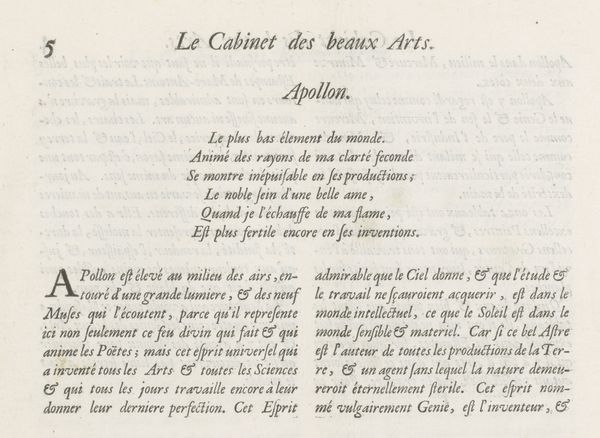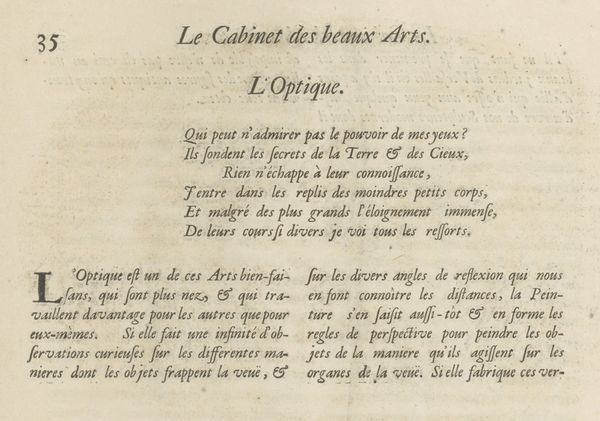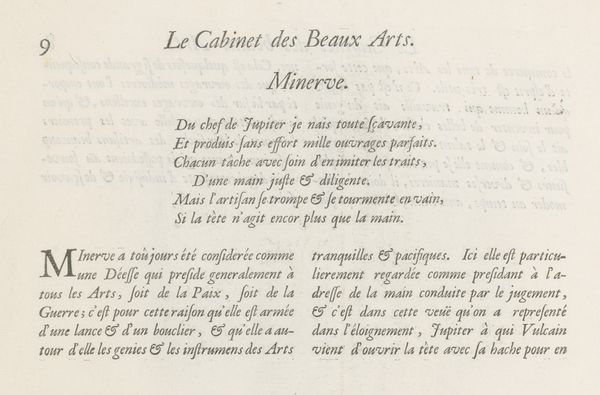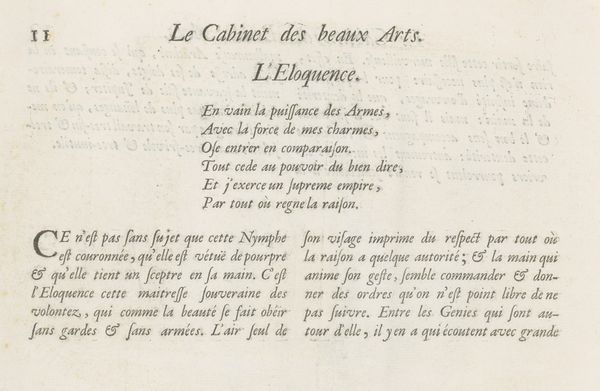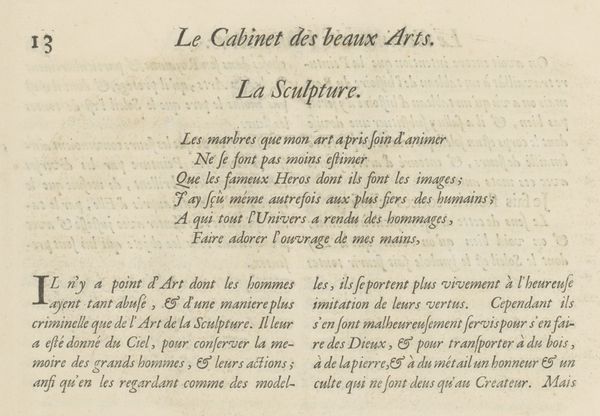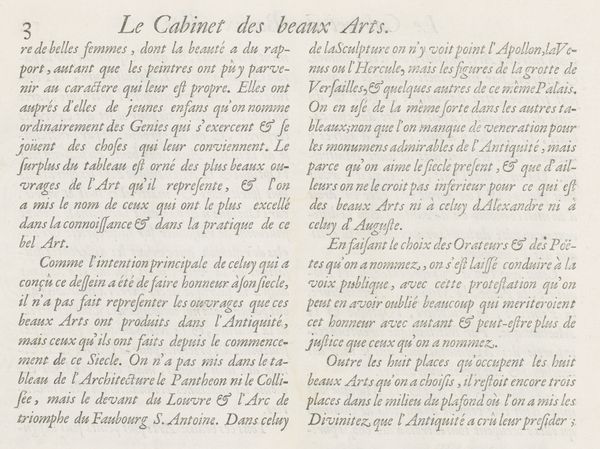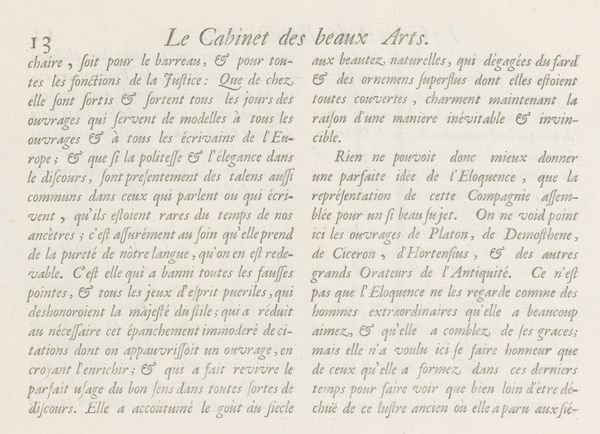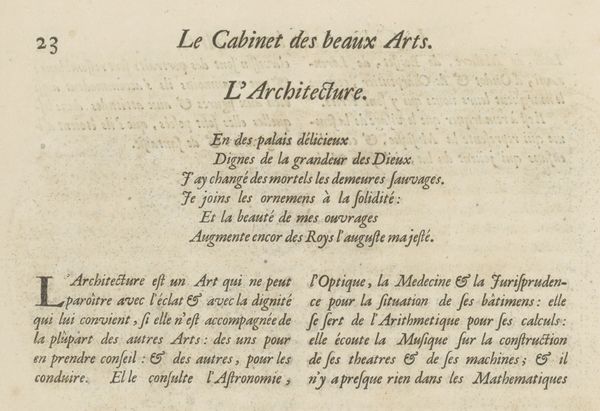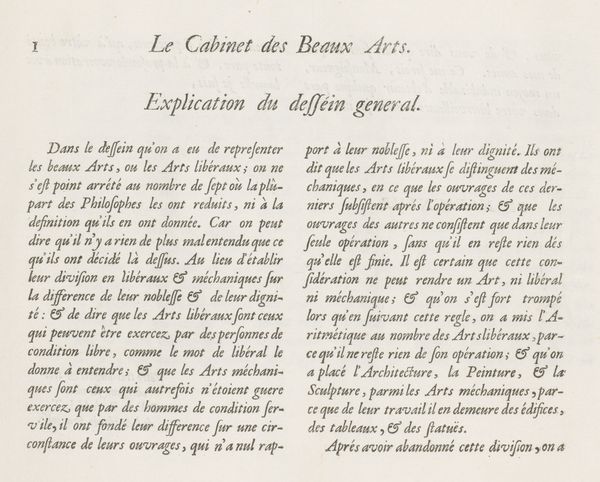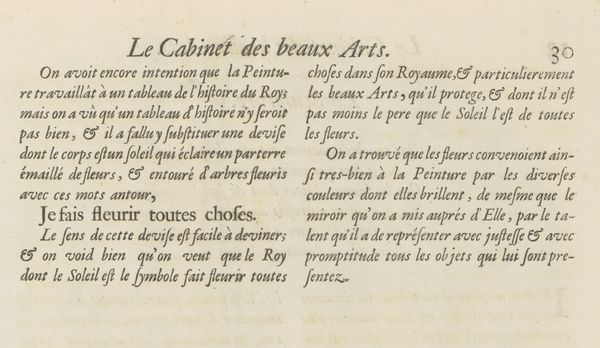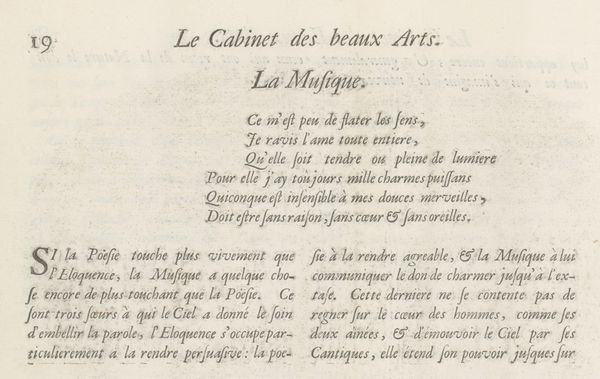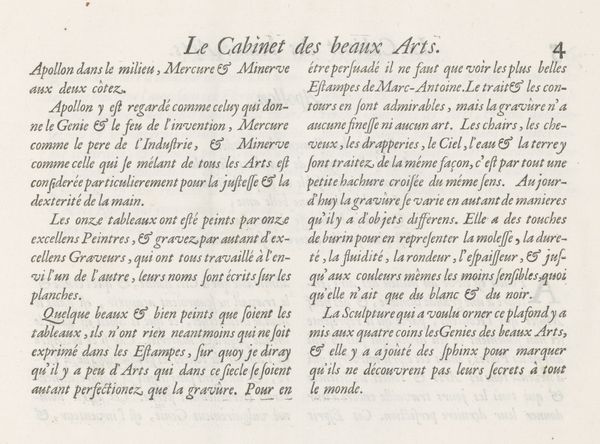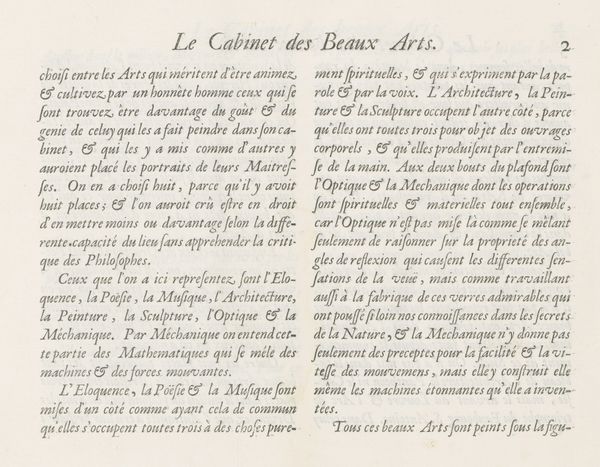
drawing, print, textile, paper, typography
#
drawing
#
script typography
#
hand-lettering
#
baroque
# print
#
lettering
#
hand drawn type
#
hand lettering
#
textile
#
paper
#
typography
#
fading type
#
stylized text
#
thick font
#
handwritten font
#
calligraphy
#
small lettering
Dimensions: height 281 mm, width 380 mm
Copyright: Rijks Museum: Open Domain
This page, titled "Poetry" from "The Cabinet of the Fine Arts" was created by Charles Perrault. Here, the laurel wreath emerges as a potent symbol. Historically, it has signified triumph, success, and poetic genius, dating back to ancient Greece, where laurel crowned victors and poets alike. We find echoes of this tradition throughout history, from Roman emperors to Renaissance artists, each adopting the wreath to evoke authority and excellence. Yet, its meaning shifts. Initially a symbol of earthly achievement, it morphs into a signifier of divine inspiration. Think of Apollo, the god of music and poetry, forever adorned with laurel. Psychologically, the laurel wreath taps into our collective desire for recognition and immortality. It speaks to our innate drive to create, to excel, and to leave a lasting mark. The wreath is more than mere foliage; it is a powerful emblem that engages viewers on a deep, subconscious level, promising glory and enduring legacy. This symbol constantly resurfaces, evolving, and taking on new layers of significance.
Comments
No comments
Be the first to comment and join the conversation on the ultimate creative platform.
